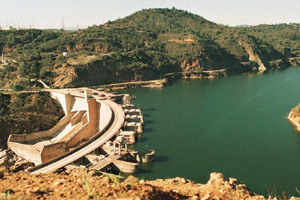Human activities, like using the soil for agriculture and cattle-farming, are some of the most significant causes for the drop-off of Chilean flora.
Estimates say that human influence on the extension of native forests was minimal until the arrival of the Spanish (over 450 years ago). However, ever since that event the situation has changed considerably, because nowadays the main reason for the decrease of plant species is the fragmentation and reduction of their habitat due to the actions of Man. A few of the most important factors are:
– The use of forest grounds for agriculture and cattle-farming: using the land for these two activities has caused a noticeable drop-off in flora, especially the endemic flora from the regions of el Maule, Biobio, Araucania, los Rios and los Lagos.
– Overgrazing: it causes changes in the composition of flora, especially in species that have a slow growth. It also destroys young trees of certain species that are coveted by cattle, like the Chilean Mesquite (Prosopis chilensis).
– The forest industry: since the 1970s, this type of activity has turned into the main cause for deforestation. Native forests have showed an annual decrease level of 4,5 from those days to today in some areas of the Coastal mountain range in the regions of el Maule and Biobio.
– Development of urban areas and industrial exploitation: the construction of condos, roads or hydroelectric dams. For example, the Orites myrtoidea was damaged in the Maule valley due to the enlargement of the highway that leads to the border with Argentina.
Other factors that cause conservation problems are:
– Natural disasters: floods, droughts (caused by the decrease in precipitation), earth quakes, tsunamis and volcanic eruptions cause plants, especially endemic ones, to disappear.
– Pollution of water and soil: the pollution of forests with trash, acid rain, among other factors, damage the habitats of several plant species throughout national territory, in some cases causing their death.
– Climate change: it is said that in the next few years the greatest impact of this phenomenon will take place in the central and southern forests of the country, especially in those varieties that take up specific habitats. This, because the different forests of these zones are closely linked to temperature, precipitation and other factors such as the soil. The increase or decrease of said components can cause some sectors that are occupied by endemic species to change and end up being unapt for their habitat.








